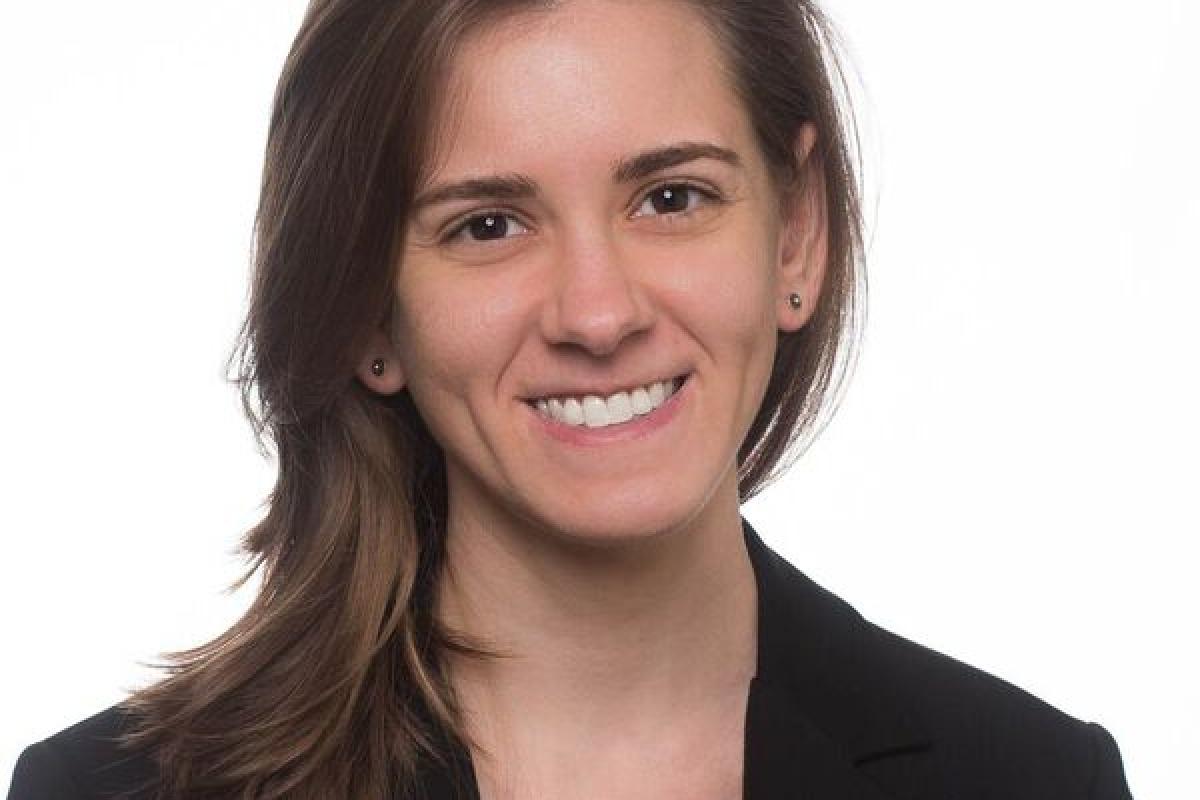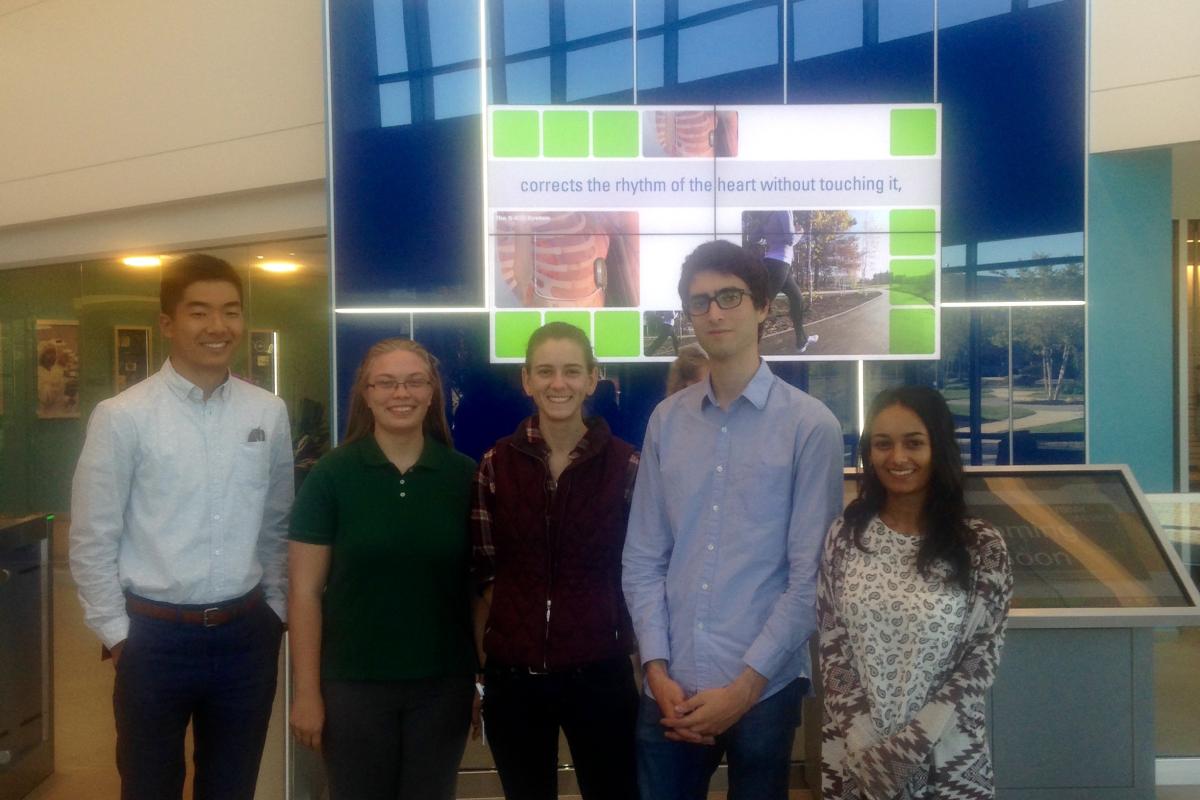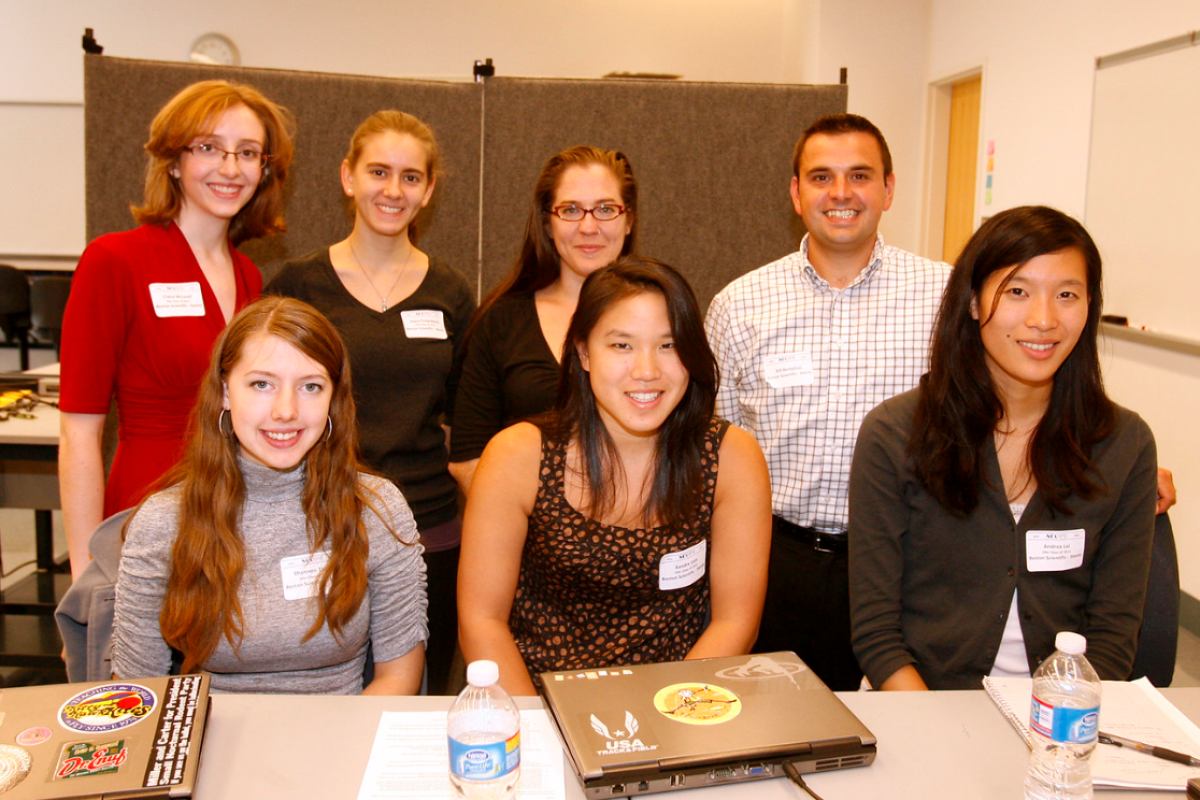STORY: Olin Alumna Comes Full Circle as SCOPE Sponsor
Laura Christakis ’11, who first worked with Boston Scientific in her own SCOPE project, is now the company’s liaison with Olin for this culminating senior project.
Laura Christakis ’11, principal R&D engineer at Boston Scientific, has a more multi-faceted relationship with Olin’s SCOPE (Senior Capstone Program in Engineering) than many—as a former student and as a current corporate partner.
Originally from Littleton, MA, Christakis followed her older sister’s footsteps and attended Olin as an undergraduate to pursue a hands-on, project-based education. She concentrated in Bioengineering (BioE), focusing on tissue and cell engineering while working with mentors such as Alisha Sarang-Sieminski and Joanne Pratt and taking additional biology classes through Wellesley College.

BioE was relatively new at Olin, and the bioengineering field didn’t have many SCOPE sponsors at the time
When it came time for us to take SCOPE, it was kind of understood that Boston Scientific was the most BioE-focused option and that most of us would go for one of the two projects they sponsored that year."
Laura Christakis
Class of 2011
Christakis’s project was on designing solutions to keep endoscopic stents in place within the gastrointestinal (GI) tract. “The human body is very dynamic, and the GI tract is very slippery because it’s meant to keep food moving down,” says Christakis. “Stents are sometimes used to keep the GI tract open if perhaps scar tissue or cancerous masses are causing constriction, but it’s tricky to get them to stay in place in that environment.”
Beyond the technical challenge, a big part of the project that stuck with Christakis was seeing how the Olin and Boston Scientific mentors guided students to approach the problem through their own lens.
“Early on, Alisha helped set the expectation that even though this was a mechanical engineering issue in addition to a bioengineering one, we as students needed to apply our area of expertise to make a positive impact on the project and the company,” says Christakis. “Part of the point of Boston Scientific joining forces with Olin on SCOPE projects was to obtain these kinds of different, fresh perspectives that the students bring; it’s more bang for their buck in the long run.”

Laura Christakis and a Boston Scientific liaison with the 2015-2016 Boston Scientific SCOPE team.
SCOPE also helped Christakis realize how much she enjoyed working on an interdisciplinary team—something that made her reconsider attending graduate school in favor of taking a job at Boston Scientific after graduation to bring her team’s SCOPE project in-house. For the first few years she continued that endoscopic stent work as well as other side projects, until 2015 when she was brought onto SCOPE again, this time as one of the company’s liaisons.
“As bioengineering partnerships with Olin expanded and there was a greater variety of projects for students to choose from, that year was a turning point in the type of projects that our endoscopy team supplied to SCOPE,” says Christakis. “Stents that go in the GI tract are braided wire meshes, which were mechanically intensive and expensive to prototype and design at the time. But rather than a bioengineering challenge, we proposed a project to improve an existing mathematical model on stent behavior, which opened the perception of what kind of student we were looking for.”

Image of the Boston Scientific 2010-2011 SCOPE team.
By looking for more data- and math-oriented students, Christakis and Boston Scientific leveraged the opportunity to enhance the interdisciplinary nature of their SCOPE team. “Especially because of the design thinking curriculum, Olin students have a much broader view of what engineering is, which allows them to think more holistically about projects,” says Christakis. “It’s also a tremendous opportunity for companies to open up a talent pipeline—you get to see how people work individually and as part of a team, how they represent themselves, and their level of critical and creative thinking.”
Christakis is a mentor on this year’s SCOPE project, which recently kicked off. Olin students will be working with Boston Scientific to make endoscopy—in which most tools and devices can only be used once—more sustainable by reconsidering a particularly high-volume, single-use product.
“I’m excited about how the Olin students will approach this challenge because they understand the importance of first diving into the context of the problem,” says Christakis. “Olin students are thoughtful about their questions, and I’m sure they are going to give us some fresh perspectives on this important work.”